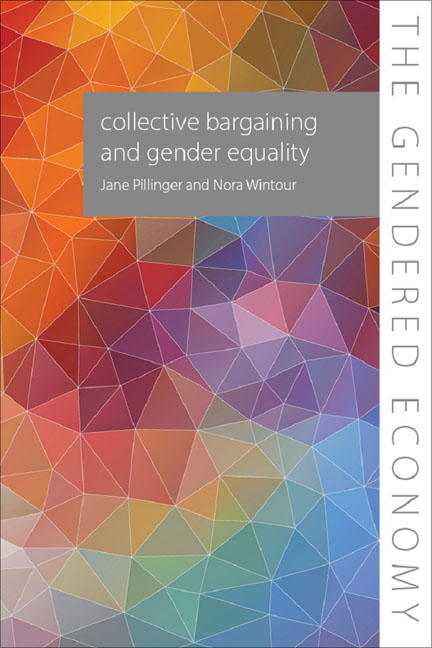Book contents
- Frontmatter
- Dedication
- Contents
- Acknowledgements
- Acronyms
- Foreword
- 1 Introduction
- 2 The gender dimensions of collective bargaining
- 3 Collective bargaining as a tool for gender equality: evidence from across the world
- 4 Changing employment patterns, precarious and informal work, and the challenge for collective bargaining
- 5 The global dimension of collective bargaining: the role of global framework agreements in promoting gender equality
- 6 Conclusion
- References
- Index
1 - Introduction
Published online by Cambridge University Press: 09 August 2023
- Frontmatter
- Dedication
- Contents
- Acknowledgements
- Acronyms
- Foreword
- 1 Introduction
- 2 The gender dimensions of collective bargaining
- 3 Collective bargaining as a tool for gender equality: evidence from across the world
- 4 Changing employment patterns, precarious and informal work, and the challenge for collective bargaining
- 5 The global dimension of collective bargaining: the role of global framework agreements in promoting gender equality
- 6 Conclusion
- References
- Index
Summary
This book examines the role and contribution of collective bargaining to gender equality in the context of globalization and women’s struggles, organizing and advocacy in trade unions. It tracks how union collective bargaining agendas have shifted to reflect women’s struggles for equality, providing avenues for sustainable gender equality gains. Building on the existing understanding of the role that women in trade unions have played in developing new agendas for “equality bargaining”, it reviews recent collective bargaining breakthroughs in areas such as equal pay, work–life balance and gender-based violence in the world of work. While the focus is mainly on European countries, initiatives related to union organizing and negotiating for women workers in developing country contexts and through global supply chains are integrated throughout the book, reflecting increased attention to this work over the past two decades. Nonetheless, it remains true that the vast majority of women, whether in paid employment, self-employment or informal work, do not benefit from collective bargaining coverage, particularly in the global south and in fragile states.
The authors draw on over three decades of engagement on equality issues with trade unions across the world. Based on primary evidence, original research and surveys, as well as the authors’ own participation in global union campaigns on issues such as pay equity, maternity protection, organizing self-employed and informal women workers, on migrant workers and on gender-based violence, the book also includes insights gained as a result of engagement with recent national, European and global social dialogue initiatives.
Despite the many challenges, it is important to recall that trade unions are the largest collective organization of women across the world. Collective bargaining remains critically important in the globalized economy, precisely because of new employment patterns and the increasing incidence of precarious work. By pointing to recent promising developments in collective bargaining, the book also reflects on some ways forward for collective bargaining to play a more central role in achieving gender equality.
UNION CONTRADICTIONS AND CHALLENGES IN RELATION TO GENDER EQUALITY
Trade unions were formed in the late nineteenth century to protect the interests of skilled male craft workers, a role later extended to the predominantly male workforce in manufacturing, transport and the public sector, mainly in Europe and North America.
- Type
- Chapter
- Information
- Collective Bargaining and Gender Equality , pp. 1 - 8Publisher: Agenda PublishingPrint publication year: 2018

